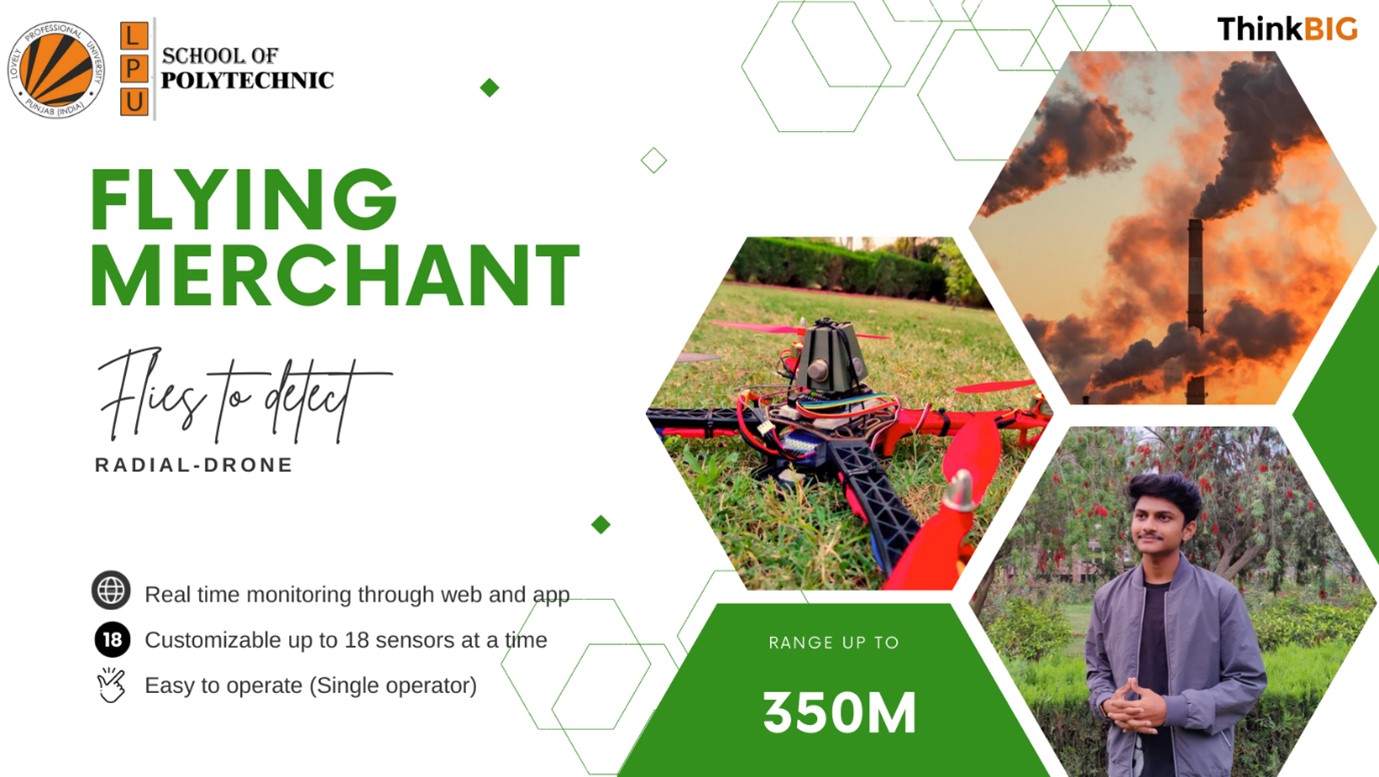LPU team of innovators from the School of Polytechnic, Chukka Gowtham Kumar along with his mentor Gagandeep Singh, is taking engineering to new heights. From designing drones equipped with multiple gas detection sensors to developing cutting-edge technologies for air monitoring, our team continues to push the boundaries of air quality.
The use of drones in various industries has grown in popularity over the past decade, and for good reason. These unmanned aerial vehicles have proven to be extremely versatile tools and can be used in a variety of applications. One of the most promising and useful applications of drones is gas detection.
Gas detection has traditionally been carried out by specialized teams and the team is equipped with expensive and cumbersome equipment. The equipment needs to be transported to the site of the original gas release, which can be difficult in hard-to-reach areas or hazardous environments. However, with the advent of drones, gas detection has become easier, more affordable, and more efficient.
This innovation in this field is the development of drones equipped with multiple gas sensors. The radial drone has a modular design, allowing users to swap out different gas sensors for specific applications as needed. For example, if drones are used to detect methane leaks in natural gas pipelines, sensors specifically designed to detect methane could be installed. Even if drones are used to monitor air quality in cities, sensors for various pollutants can be installed.
The radial drone’s gas sensor is so sensitive that it can detect even low concentrations of the gas. This is important for applications such as leak detection, where a small leak can be just as dangerous as a large one. Data from the sensors is sent back to ground station on the site in real time, enabling users to monitor gas levels and make decisions about the safety of the area.
The versatility and efficiency of this radial drone make it an ideal tool for a wide range of applications. In addition to gas leak detection and air quality monitoring, it can also be used in occupational health and safety inspections, agriculture, and even search and rescue operations. It can be deployed quickly and easily, making it ideal for emergency response teams.
Overall, the development of this gas detection drone represents a major advance in the field of airborne gas detection. By combining the power of drones with highly sensitive gas sensors like MQ2, MQ3, MQ4, MQ5, MQ6, MQ7 MQ135, MQ8 MQ9 etc, for detection of various gases like Carbon monoxide, LPG, Ammonia, Benzene, or Methane, it is now possible to detect and monitor gas leaks like never before. With its modular design and multifunctional capabilities, this drone has the potential to revolutionize the way we conduct gas detection across a wide range of industries.
Let’s fly high and say goodbye to pollution!


















